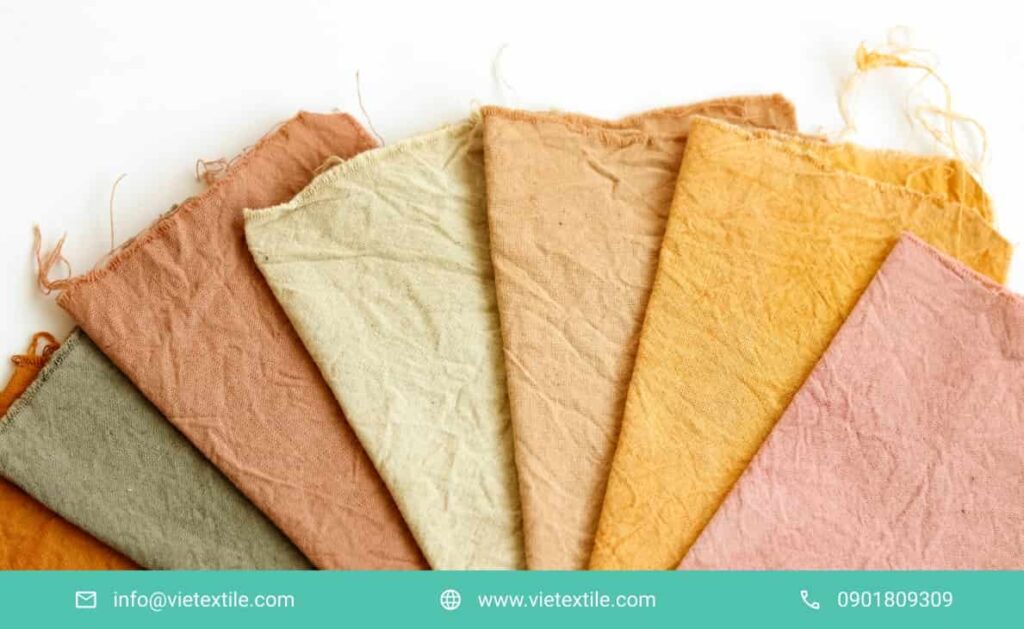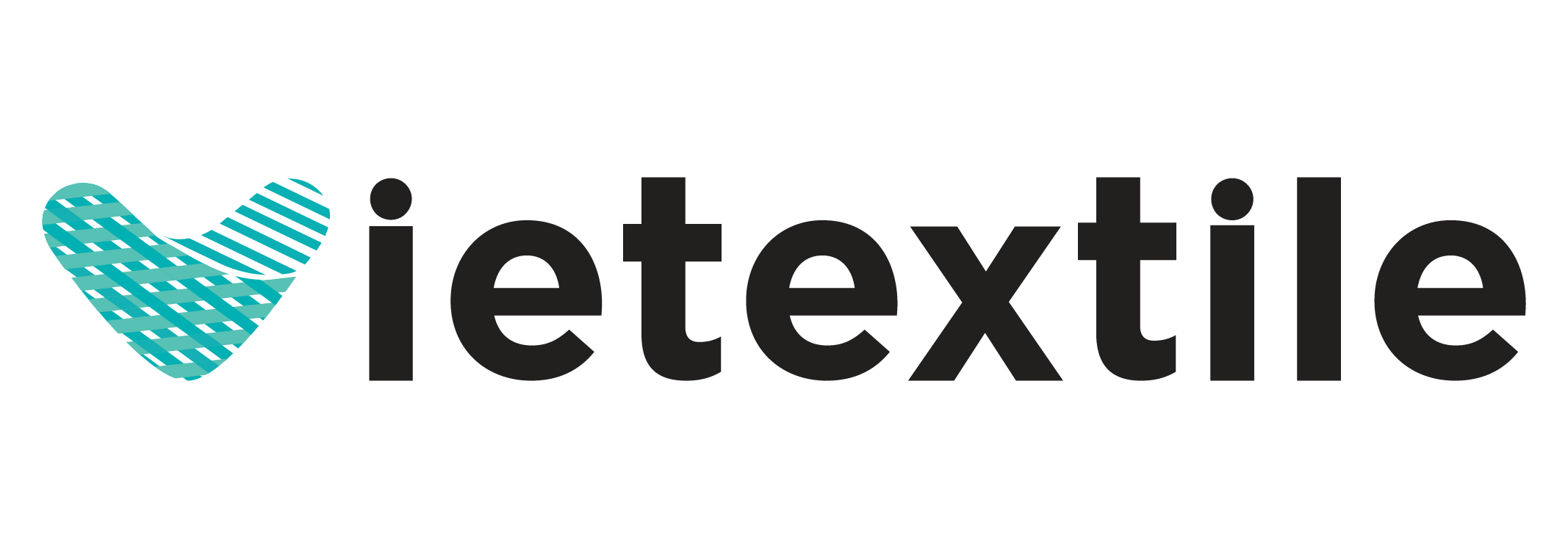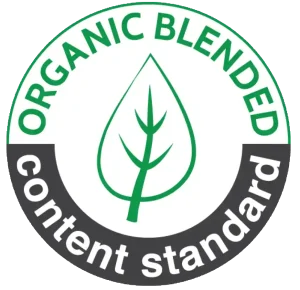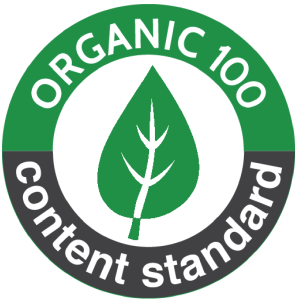Modal fabric, a new generation of regenerated cellulose fiber derived from beech wood, is renowned for its exceptional softness, superior drape, and moisture absorption capacity 50% higher than cotton. These properties make Modal a premium material, but they also impose strict requirements on dyeing technology. Like other cellulose fibers, the choice of Modal fabric dyes typically falls between two main groups: Reactive Dyes and Direct Dyes.
The selection between Reactive and Direct is not just a technical matter but a strategic economic decision. Reactive Dyes offer excellent color fastness, but require a complex and costly process. Conversely, Direct Dyes are simple and inexpensive, but their color fastness may not meet strict standards.
This in-depth article will analyze the chemical mechanism of each dye type, detail the pros and cons, and provide clear comparison criteria so textile manufacturers can make the most optimal choice when using Modal fabric dyes, ensuring a balance between finished product quality, color fastness, and production cost.

1. Dye Absorption Mechanism of Modal Fabric
Nội dung tóm tắt
ToggleModal is a pure Cellulose fiber, composed of glucose units. This structure has numerous Hydroxyl (-OH) groups, creating the potential for reaction and bonding with dyes.
1.1. Superior Properties of Modal Compared to Cotton
- High Cellulose Purity: Modal’s structure is almost pure Cellulose, with fewer impurities than Cotton, helping dye absorption be more uniform.
- Lower Crystallinity: The Amorphous Region in Modal is larger than in Cotton. This allows the dye to diffuse easier and deeper into the fiber.
- High Moisture Absorption: Superior moisture uptake allows the dye liquor and chemicals to penetrate deeply, which is especially beneficial for using Reactive Modal fabric dyes.
1.2. Objectives for Dyeing Modal
When dyeing Modal, the main objectives are to achieve:
- Depth of Shade: Saturated, rich colors.
- Levelness: Uniform color across the entire fabric surface.
- Fastness: Especially Wash Fastness, rubbing fastness (dry/wet), and light fastness.
2. Analysis of Reactive Dyes for Modal Dyeing
Reactive Dyes are the most technically optimal type of Modal fabric dyes, particularly used for products requiring high quality such as premium fashion and sportswear.
2.1. Chemical Reaction Mechanism (Covalent Bond)
Reactive Dyes are the only type of dye capable of forming a Covalent Bond between the dye molecule and the Modal fiber.
Reaction Process:
- Absorption: The dye diffuses into the fiber and temporarily bonds via Van der Waals forces or Hydrogen bonds.
- Fixation: In a strong alkaline environment (usually Sodium Carbonate (Na2CO3) or Sodium Hydroxide (NaOH)), the dye’s reactive group reacts with the Hydroxyl (-OH) group on the Cellulose fiber, forming a strong Covalent Bond.
2.2. Absolute Advantages of Reactive Dyes
| Characteristic | In-Depth Analysis |
| Wash Fastness | Excellent (Grade 4-5). The covalent bond is the strongest chemical bond, ensuring the dye does not bleed even when washed at high temperatures or with strong detergents. |
| Bright Shades | Delivers bright, vivid color palettes and higher color saturation than Direct Dyes. |
| Application Range | Suitable for all product types, especially exports, swimwear, underwear, and children’s clothing requiring international fastness standards. |
2.3. Disadvantages and Challenges
- High Chemical Requirement: Requires a large amount of salt (NaCl or Na2SO4) to aid absorption and alkali (Na2CO3) to activate the color fixation reaction.
- Dye Loss Rate (Hydrolysis): A significant portion (typically 10\% – 30\%) of Reactive Dyes reacts with water (hydrolysis) instead of the fiber, creating useless dye. This increases dye costs and contributes to environmental pollution.
- Complex Process: After fixation, a thorough Soaping/Washing Off process is mandatory to remove unbonded, hydrolyzed dye. If cleaning is inadequate, rubbing fastness will be affected.
3. Analysis of Direct Dyes for Modal Dyeing
Direct Dyes are the traditional Modal fabric dyes, favored for their simplicity and low cost.
3.1. Physical Absorption Mechanism (Van der Waals/Hydro Bond)
Direct Dyes do not form covalent bonds but only establish a physical bond with the Modal fiber.
- Mechanism: Direct Dye molecules have a flat, elongated structure, allowing them to align parallel to the Cellulose polymer chain. The primary forces of attraction are Van der Waals forces and Hydrogen bonds.
- Salt Assistance: Adding salt (e.g., NaCl) in the dye bath reduces the dye’s solubility, causing the dye to aggregate closer to the fiber and driving absorption into the Modal fiber.
3.2. Advantages in Cost and Process
| Characteristic | In-Depth Analysis |
| Low Cost | The most economical choice. The cost of Direct Dyes and supplementary chemicals is significantly lower than Reactive Dyes. |
| Simple Process | No strong alkali needed for fixation. Only requires heat, salt, and time. This reduces energy costs and processing time. |
| High Levelness | The uptake rate is relatively slow, making it easier to control than Reactive Dyes, with fewer Levelness Issues. |
3.3. The Biggest Disadvantage (Color Fastness)
- Low Wash Fastness (Poor to Fair): Since the bonding is only physical, the dye is easily broken and washed away during laundering. Wash fastness typically achieves only Grade 2-3.
- Fixing Agent Required: It is mandatory to use a Cationic Fixing Agent after dyeing to improve color fastness, especially wet fastness. This adds an extra step and cost to the process.
- Shades: The color palette tends to be duller and less vibrant compared to Reactive Dyes.
4. Detailed Comparison Table: Modal Fabric Dyes

| Comparison Criteria | Reactive Dyes | Direct Dyes |
| Bonding Mechanism | Covalent Bond (Very Strong) | Physical Bond (Van der Waals, Hydro Bond) (Weak) |
| Wash Fastness | Excellent (Grade 4-5) | Poor to Fair (Grade 2-3) |
| Light Fastness | Good (Dependent on structure) | Average |
| Color Depth | Very good, vibrant colors | Good, duller colors |
| Chemical Requirement | Salt (NaCl), Strong Alkali (Na2CO3) | Salt (NaCl) |
| Processing | Complex, requires alkali fixation and thorough washing off | Simple, one-step dyeing |
| Dye Loss Rate | High (due to hydrolysis) | Low |
| Overall Cost | High (due to dye and chemical costs) | Low |
| Suitable Application | Premium products, exports, sportswear, children’s clothing. | Common products, low price requirements, pale shades. |
5. Advanced Techniques for Optimizing Modal Dyeing Quality
Regardless of the type of Modal fabric dyes chosen, the following techniques will help optimize the results.
5.1. Cold Pad-Batch Technique for Reactive Dyes
For Reactive Dyes, the Cold Pad-Batch technique is an efficient method to save energy and increase efficiency.
- Mechanism: Modal fabric is padded in a solution of dye and alkali (usually NaOH and Silicate) at room temperature. The fabric is then rolled up and batch-cured for 4-24 hours.
- Advantage: The fixation reaction occurs slowly and uniformly, increasing levelness and significantly reducing thermal energy costs. The reaction rate of the Modal fabric dyes with the fiber is higher than the hydrolysis rate.
5.2. Enhancing Fastness for Direct Dyes with Post-Dyeing Process
If using Direct Dyes is mandatory to reduce costs, improving color fastness is the top priority.
- Using Cationic Fixing Agents: After dyeing and light washing off, the fabric is treated with a cationic fixing agent solution. These agents form an ionic bond with the anionic Direct Dye molecules within the fiber, creating a non-water-soluble complex that locks the color in.
- Copper Treatment: Some Direct Dyes are capable of forming complexes with Copper ions (Cu^2+). Post-treatment with a Copper Sulphate solution can significantly improve light fastness and wet fastness.
6. Classification and Selection of Optimal Reactive Dyes for Modal
Reactive Dyes are classified based on their reactive group and optimal reaction temperature, directly affecting their ability to fix color on Modal fiber.
6.1. Classification Based on Reaction Temperature (Temperature Zone)
| Dye Group | Common Reactive Group | Optimal Dyeing Temp | Key Characteristic When Dyeing Modal |
| Cold Brand | Dichlorotriazine (DCT) | 20-40C | Suitable for Cold Pad-Batch technique. Good fixation rate but requires very strict pH control. |
| Medium Brand | Monochlorotriazine (MCT) | 60-80C | Balance between reaction speed and levelness. Commonly used in Jet dyeing. |
| Hot Brand | Vinyl Sulfone (VS) | 80-95C | High fixation rate, best wash fastness. However, prone to unlevelness (Tailing) if temperature and time control are inaccurate. |
| Bi-Functional | Contains both MCT and VS | 60-95C | Provides higher fixation efficiency and better fastness due to two reactive groups responding under different conditions. Minimizes hydrolysis risk. |
6.2. Optimal Selection of Reactive Dyes for Modal
Modal, with its low crystallinity structure, can use most Reactive Dyes. However, the VS (Vinyl Sulfone) or Bi-Functional groups are often preferred because:
- High Fixation Efficiency: Achieves 80\% to 90\%, minimizing the amount of hydrolyzed dye and reducing the burden on the washing off stage.
- Optimal Fastness: Ensures Modal products meet the strictest EU/US market standards, especially for wash fastness and perspiration fastness.
7. Environmental Impact and Effluent Treatment Solutions
The process using Reactive Modal fabric dyes, while optimal for quality, poses significant environmental challenges.
7.1. Pollution from Reactive Dyes
- High Salt Content: The Reactive dyeing process requires 50 to 100 grams of salt (NaCl or Na2SO4) per liter of effluent. This high Total Dissolved Solids (TDS) content is difficult to treat and harmful to aquatic ecosystems.
- Colored Effluent: Hydrolyzed Reactive Dye (10\%-30\% of the dye does not bond to the fabric) is discharged, creating dark-colored effluent. Removing this color requires complex tertiary treatment processes (e.g., adsorption with activated carbon or chemical coagulation).
- High pH: The use of strong alkali (Na2CO3) for fixation results in high pH effluent, which requires neutralization with acid before environmental discharge.
7.2. Green Solutions for Modal Dyeing
- High Exhaustion Reactive Dyes: Use new-generation Reactive Dyes with a fixation rate over 90\%. This directly reduces the amount of hydrolyzed dye discharged and lowers washing off costs.
- Alternative Salts: Investigate the use of advanced auxiliaries to partially replace salt, reducing TDS content in the effluent.
- Ozone/Fenton Effluent Treatment: Apply advanced oxidation technologies such as Ozonation (O3) or the Fenton process to break down the color structure of Reactive Modal fabric dyes in the effluent before biological treatment.
8. Total Cost of Ownership (TCO) Analysis in Modal Dyeing Technology

Evaluating cost based only on the raw dye purchase price (Dye Cost) is misleading. Total Cost of Ownership (TCO) must include all costs from raw materials to energy, water, and fault/reject handling.
| Cost Factor | Reactive Dyes (Premium) | Direct Dyes (Economical) | TCO Analysis |
| Dye Cost | High (Due to complex structure) | Low | Initial advantage for Direct Dyes. |
| Chemical Cost | Very High (Salt, Alkali, Auxiliaries) | Low (Mainly Salt) | Reactive requires significantly more alkali and salt. |
| Water & Energy Cost | High (Multiple hot washing steps) | Low (Simpler process) | Reactive’s biggest TCO weakness. |
| Washing Off Cost | Mandatory and Expensive | Simple, Lower Cost | Strong washing is necessary to remove unbonded hydrolyzed dye. |
| Fault/Redyeing Cost | Low (High fastness) | High (Prone to fastness issues) | Direct Dyes have a higher risk of customer claims due to poor wash fastness. |
| Effluent Treatment Cost | High (TDS, Colored Water) | Medium | Requires more complex treatment technology for Reactive. |
TCO Conclusion: Although the initial cost (dyes and chemicals) of Direct Dyes is lower, Reactive Dyes offer a better long-term TCO for high-requirement products, due to minimizing defect handling, redyeing costs, and quality issues (Quality Claims).
9. Role of Machinery and Spare Parts When Using Modal Fabric Dyes
The success of dyeing technology depends on the precision of the machinery, especially when handling sensitive chemicals like the strong alkali used in Reactive Dyes.
9.1. Suitable Dyeing Machines (Jet/Jigger)
- Jet Dyeing Machine: Ideal for dyeing Modal/Tricot with Reactive Dyes as it minimizes fabric creasing through continuous circulation. Dyeing machine spare parts like the Impeller and flow sensors must operate precisely.
- Jigger Dyeing Machine: Often used for Direct Dyes and woven Modal fabrics, due to the simpler process and lower temperature requirements.
9.2. Chemical and pH Control
- Dosing System: The accuracy of adding alkali (Na2CO3) is vital when dyeing with Reactive Dyes. A high-quality and well-maintained Dosing Pump system is mandatory. Dyeing machine spare parts must ensure no leaks from valves and pumps.
- pH Sensor: pH sensors (and associated controllers) need frequent calibration. A 0.5 unit pH deviation can completely change the reaction rate, affecting both the dyeing efficiency of Reactive Modal fabric dyes and cost.
10. VieTextile: Partner for Optimal Modal Dyeing Solutions
VieTextile is committed to supporting textile mills in optimizing their Modal fabric dyes processes. We provide essential dyeing machine spare parts and quality control equipment to achieve the highest chemical and mechanical precision.
VieTextile’s featured products and services include:
- Dyeing Machine Spare Parts: Various pneumatic valves, circulation pumps, high-precision temperature, and pressure sensors, helping control the heating rate and dye liquor circulation.
- Chemical Dosing Equipment: Spare parts for Dosing Pump systems, ensuring alkali and auxiliaries are added to the dye bath with milliliter accuracy, a key factor for successful Reactive Dye fixation.
- Technology Consultation: Our expert team advises on the compatibility between Modal fabric dyes (Reactive or Direct) and existing machine spare parts, helping to maximize efficiency and minimize dyeing errors.
Contact VieTextile today to receive in-depth technical support for Modal dyeing technology.
11. Frequently Asked Questions (FAQ) About Modal Fabric Dyes
1. Question: Is Modal easier to dye than Cotton? Answer: Modal is generally considered easier to dye than Cotton in terms of Levelness. Because Modal has a larger amorphous region and higher Cellulose purity, Modal fabric dyes can diffuse into the fiber more easily and uniformly.
2. Question: Why are Reactive Dyes more expensive than Direct Dyes when dyeing Modal? Answer: Reactive Dyes are more expensive because: 1) The dye molecule itself has a more complex structure (containing a reactive group), and 2) Approximately 10%-30% of the dye reacts with water (hydrolyzes), becoming useless, thus increasing the actual dye cost per kg of fabric.
3. Question: Is a Fixing Agent needed when dyeing with Direct Dyes? Answer: It is mandatory. Since Direct Modal fabric dyes only bond physically (Hydrogen, Van der Waals bonds) with the fiber, their wash fastness is very poor. A Cationic Fixing Agent must be used after dyeing to create a non-water-soluble complex, which locks the color in and improves wet fastness.
4. Question: What level of wash fastness can Modal fabric dyed with Reactive Dyes achieve? Answer: If the dyeing process is well-controlled (especially the alkalization and washing off stages), the Wash Fastness of Reactive Modal fabric dyes can reach Grade 4-5, the highest level, meeting the standards for premium export markets.
5. Question: What is the advantage of the Cold Pad-Batch technique when using Reactive Dyes for Modal? Answer: The main advantages are energy savings (no high temperature needed) and increased efficiency of the Modal fabric dyes reaction. The fixation reaction occurs slowly at room temperature, minimizing hydrolysis and allowing the dye more time to diffuse evenly, thereby improving levelness.
6. Question: Which spare part in the dyeing machine has the largest impact on chemical costs when using Reactive Dyes? Answer: The Alkali Dosing System and related spare parts like the pH Sensor. If the dosing system is inaccurate, alkali will be over-added, increasing the rate of dye hydrolysis, leading to dye waste.
7. Question: How does VieTextile support optimizing the use of Modal fabric dyes? Answer: VieTextile provides precise dyeing machine spare parts such as Circulation Pumps, Control Valves, and pH Sensors to ensure the chemical environment in the dye bath is absolutely controlled, supporting the success of both Reactive and Direct Dye processes.
To make the optimal choice between Reactive and Direct Dyes for Modal fabric, let VieTextile provide specialized consultation on equipment and dyeing machine spare parts.
Contact Information:
Hotline: 0901 809 309
Email: info@vietextile.com
Website: https://vietextile.com










